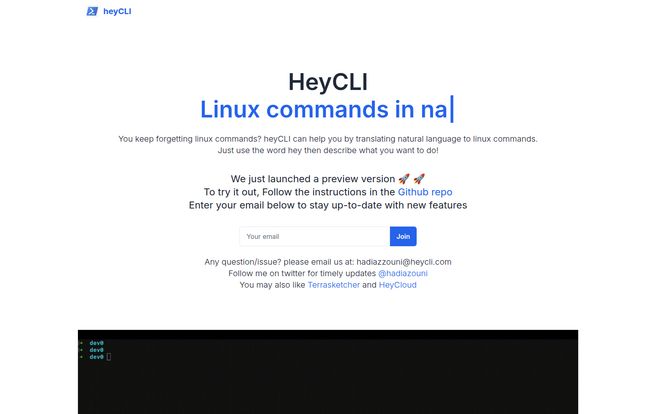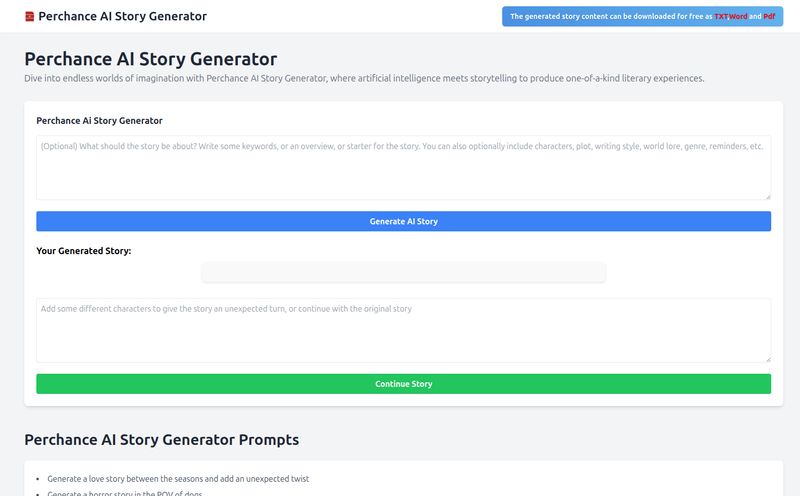We've all been there. You're deep in a server, SSH'd into some remote box, and you need to do that one thing. You know, the thing you do twice a year. Like finding all files modified in the last 24 hours that contain the word 'error' and are larger than 50 megabytes. Your mind goes completely blank. The syntax for find, combined with grep and maybe some xargs, just evaporates. So what do you do? You open a new browser tab, type your query into Google, click on a Stack Overflow link, and copy-paste a command you only half-understand. We've all done it. No shame.
But what if you could skip that whole song and dance? What if you could just… ask your terminal what you want, in plain English?
That's the promise of a neat little tool I've been playing with called heyCLI. It calls itself a copilot for Linux commands, and I gotta admit, the idea is pretty compelling.
So What Exactly is heyCLI?
At its core, heyCLI is a smart little utility that translates your normal, everyday language into a functional Linux terminal command. It's built on natural language processing (NLP), which is the same kind of tech that powers things like ChatGPT and Google Assistant. Think of it less like a command and more like a conversation.
Instead of trying to remember if the flag for `tar` to extract a file is -xvf or -zcf (and which one is for gzipped files again?), you could theoretically just type something like:
hey extract the contents of my_archive.tar.gz
And poof, it suggests the correct command: tar -xvf my_archive.tar.gz. It’s like having a seasoned Linux guru whispering the right command in your ear, right when you need it. The whole project comes from a developer named Hadi Azzouni, and it's completely open-source, which is a huge plus in my book.

Visit heyCLI
The Good, The Bad, and The Bash
No tool is perfect, of course. Especially one that’s still in a “preview version,” as heyCLI is. After kicking the tires for a bit, here’s my honest take on where it shines and where it, well, stumbles a bit.
The Upside of a Terminal Copilot
The most obvious win here is for people new to the command line. The learning curve for Linux can be brutal. It's a vertical wall of memorization. heyCLI acts like a fantastic set of training wheels. You can see the direct translation from your intent to the actual command, which is an incredible learning mechanism. I'd argue it's more effective than just copy-pasting from a tutorial because it's your specific problem being solved.
But it's not just for beginners. I’ve been working with Linux for over a decade, and my brain is already full. I don't want to store the syntax for `ffmpeg` or `rsync` commands I only use a few times a year. This tool offloads that mental burden. It saves me that context-switching trip to the browser, which keeps me in the flow. That's a huge boost for productivity. It doesn’t replace knowledge, it augments it. It's a quick reference without the search.
A Few Caveats to Consider
Now for the reality check. First off, this is a preview. That means you should expect some bugs, some weirdness. It’s not a polished, v1.0 product, and that's okay. The creator is upfront about it.
Second, its accuracy is only as good as its NLP model. For simple stuff, it's great. But for a truly convoluted, multi-pipe command with redirects and complex regex? It might get confused. This leads me to my most important point, and if you hear nothing else, hear this: never, ever blindly run a command an AI gives you. Especially not with `sudo`. Always read the command it suggests, understand what it's about to do, and only then hit Enter. A command like `rm -rf /` looks a lot less scary when it's generated by an AI you trust, but it will still wipe your entire system. Just be smart.
Lastly, it requires an internet connection. The heavy-lifting of the language processing happens in the cloud. So, if you're working on a firewalled-off production server with no external access, heyCLI won't be able to help you.
Who is This Tool Actually For?
I see a few groups of people getting a ton of value from this.
- The Linux Newbie: This is a game-changer. It lowers the intimidating barrier to entry and makes learning interactive and practical.
- The Casual User & Developer: For people like me, who live in the terminal but don't have every command memorized, it's a massive time-saver. It's the perfect sidekick for day-to-day tasks.
- Students and Educators: It's a brilliant teaching aid. An instructor could use it to show how natural language concepts translate directly into shell syntax.
Who isn't it for? Probably the hardcore sysadmin who has been scripting in Bash since the 90s and has all this stuff burned into their muscle memory. But even they might find it useful for an obscure command every now and then.
What's The Price of This Magic?
Here's the best part, at least for now. Since heyCLI is in a preview state and hosted on GitHub, it appears to be completely free to use. There's no pricing page, no subscription model mentioned. This might change in the future, of course. It wouldn't be surprising to see a model similar to GitHub Copilot, perhaps with a free tier for basic use and a pro tier for more advanced features or higher usage limits. For now, though, you can just grab it and go.
Final Thoughts: A Glimpse of the Future?
Look, heyCLI isn't going to replace a deep understanding of the Linux shell. It won't write complex 200-line bash scripts for you. But that's not its goal. Its purpose is to be a helpful assistant, a quick and intelligent reference tool that lives right where you work. And at that, it succeeds brilliantly.
It represents a trend I'm really excited about: making powerful tools more accessible through natural language. It removes a layer of friction. I'm definitely keeping heyCLI in my toolbox and I'm very interested to see how it develops. If you spend any amount of time in a terminal, you owe it to yourself to check it out. It might just save you a dozen Google searches next week.
Frequently Asked Questions about heyCLI
- How do I install heyCLI?
- Installation instructions are available on the official heyCLI GitHub repository. It typically involves running a simple script from your terminal.
- Does heyCLI work completely offline?
- No. Because it uses a cloud-based natural language processing model to translate your text, it requires an active internet connection to function.
- Is heyCLI a free tool?
- As of now, in its preview version, heyCLI is free to use. The future pricing model is unknown, but there's no cost to try it out right now.
- Is it safe to use AI-generated commands?
- With caution. It's a powerful tool, but you should always review the command heyCLI suggests before executing it. Understand what the command does, especially if it involves deleting files or making system changes (e.g., with `sudo`).
- How is this different from GitHub Copilot in the terminal?
- While both are AI assistants, heyCLI is highly specialized for one task: translating natural language into single-line shell commands. GitHub Copilot has broader capabilities within the terminal, including code autocompletion and script generation, but heyCLI's focus makes its primary function very direct and easy to use.
- Can it handle really complex commands?
- Its ability to handle complexity depends on the underlying AI model. It's generally very effective for common to moderately complex commands. For extremely long and convoluted multi-part commands, your mileage may vary. It's best to break down very complex requests into smaller parts.
References and Sources
- Official Website: heycli.com
- GitHub Repository: github.com/hadiazzouni/hey
- Creator's Twitter: @hadiazzouni



